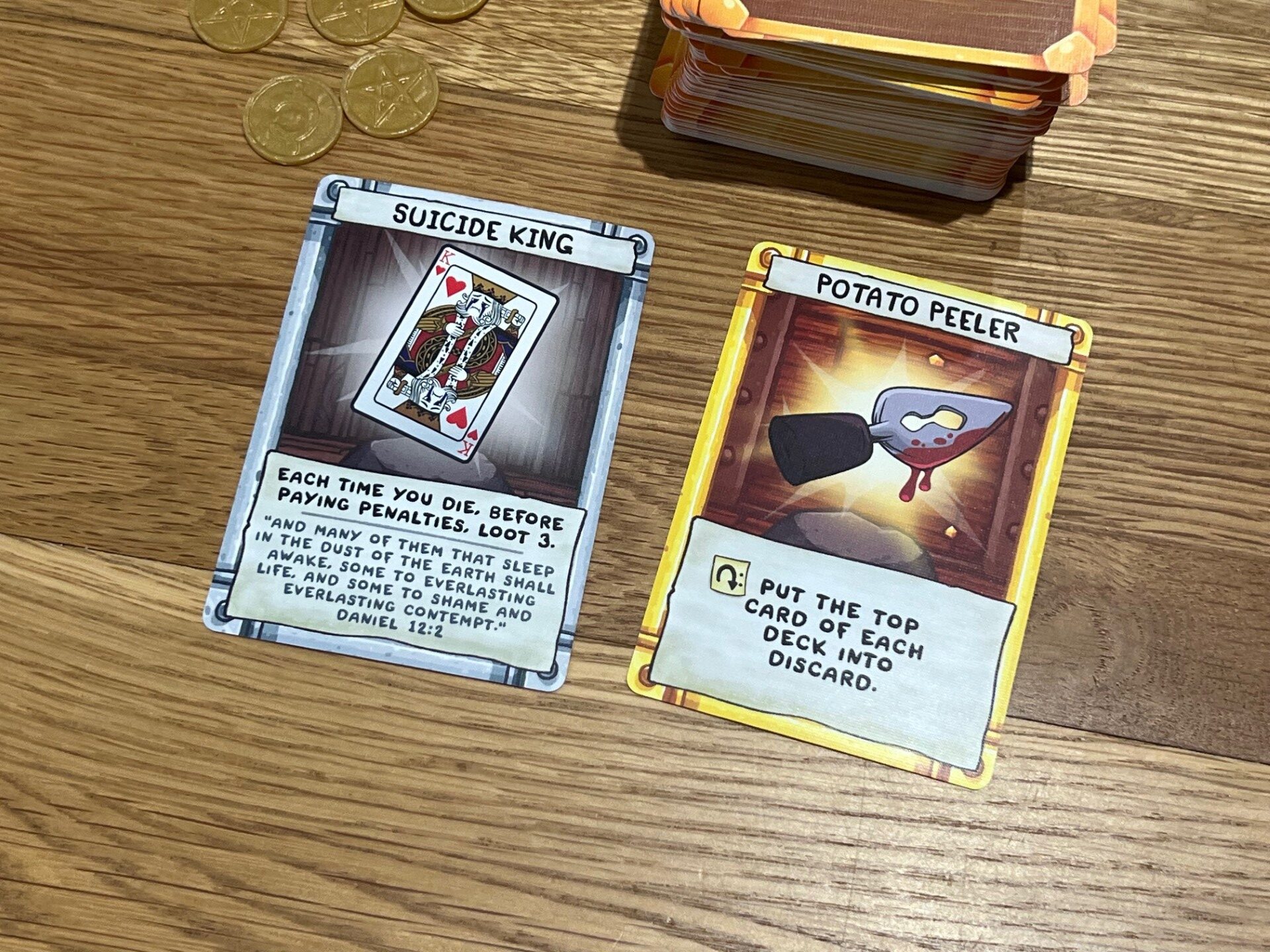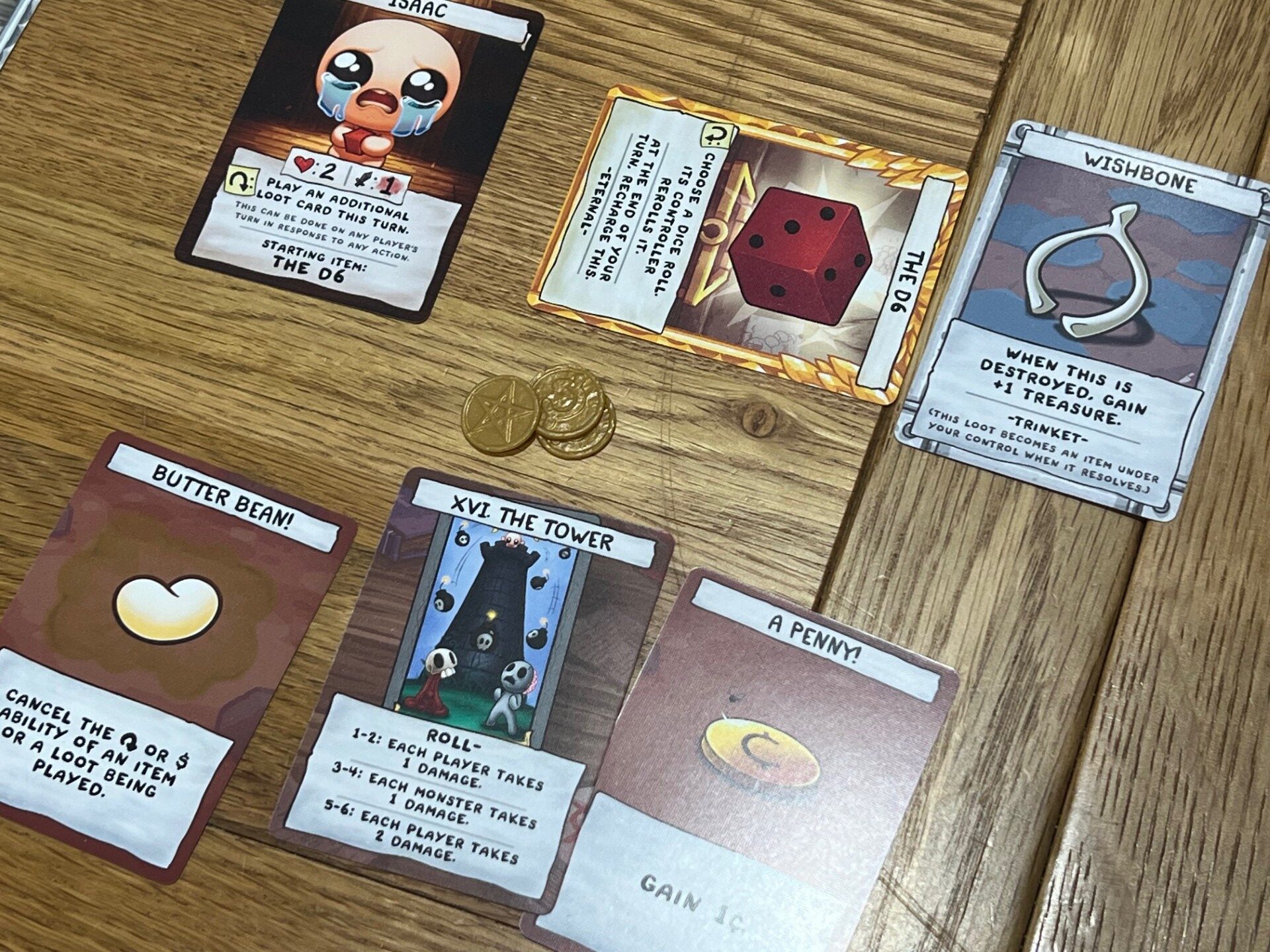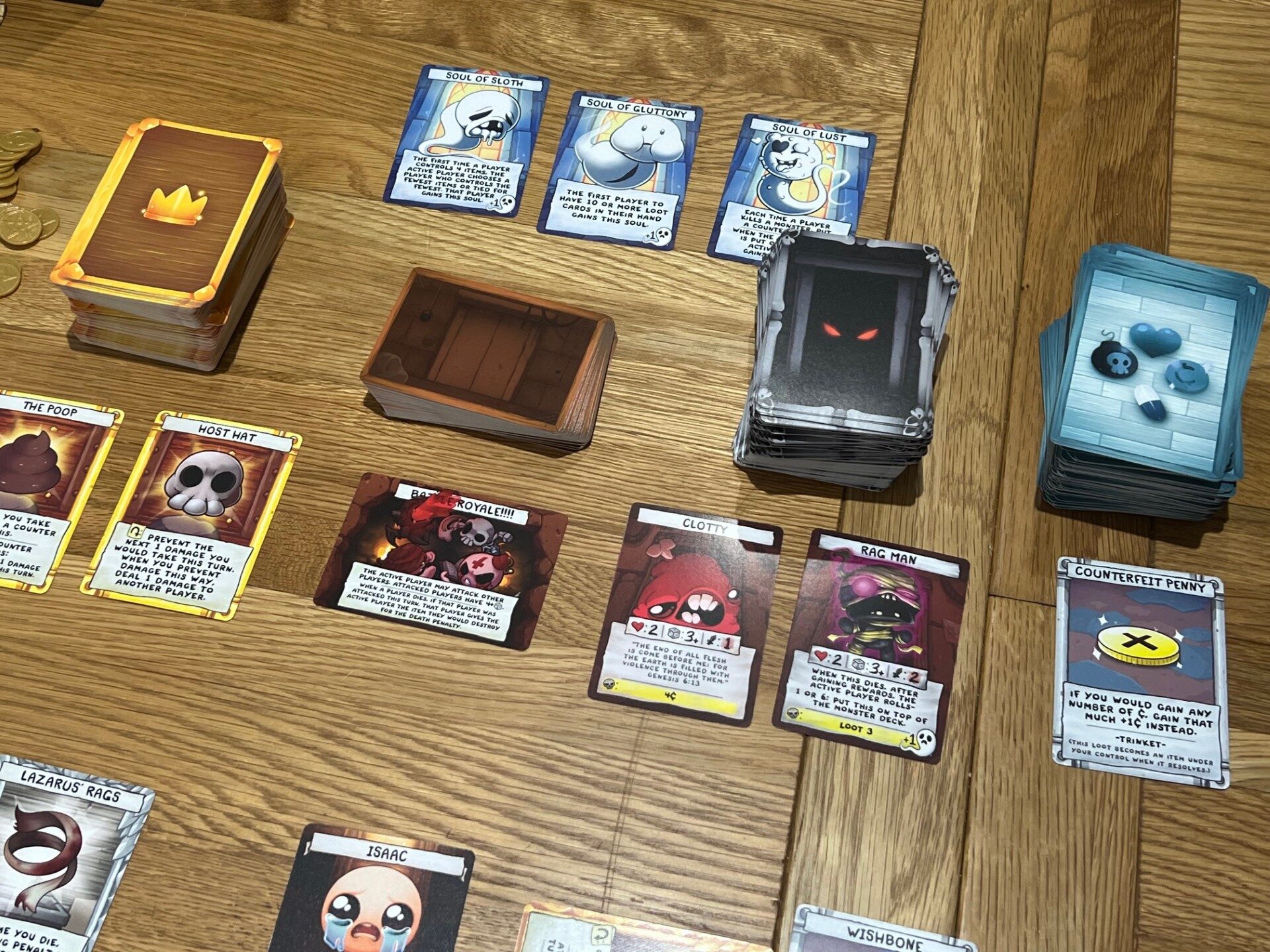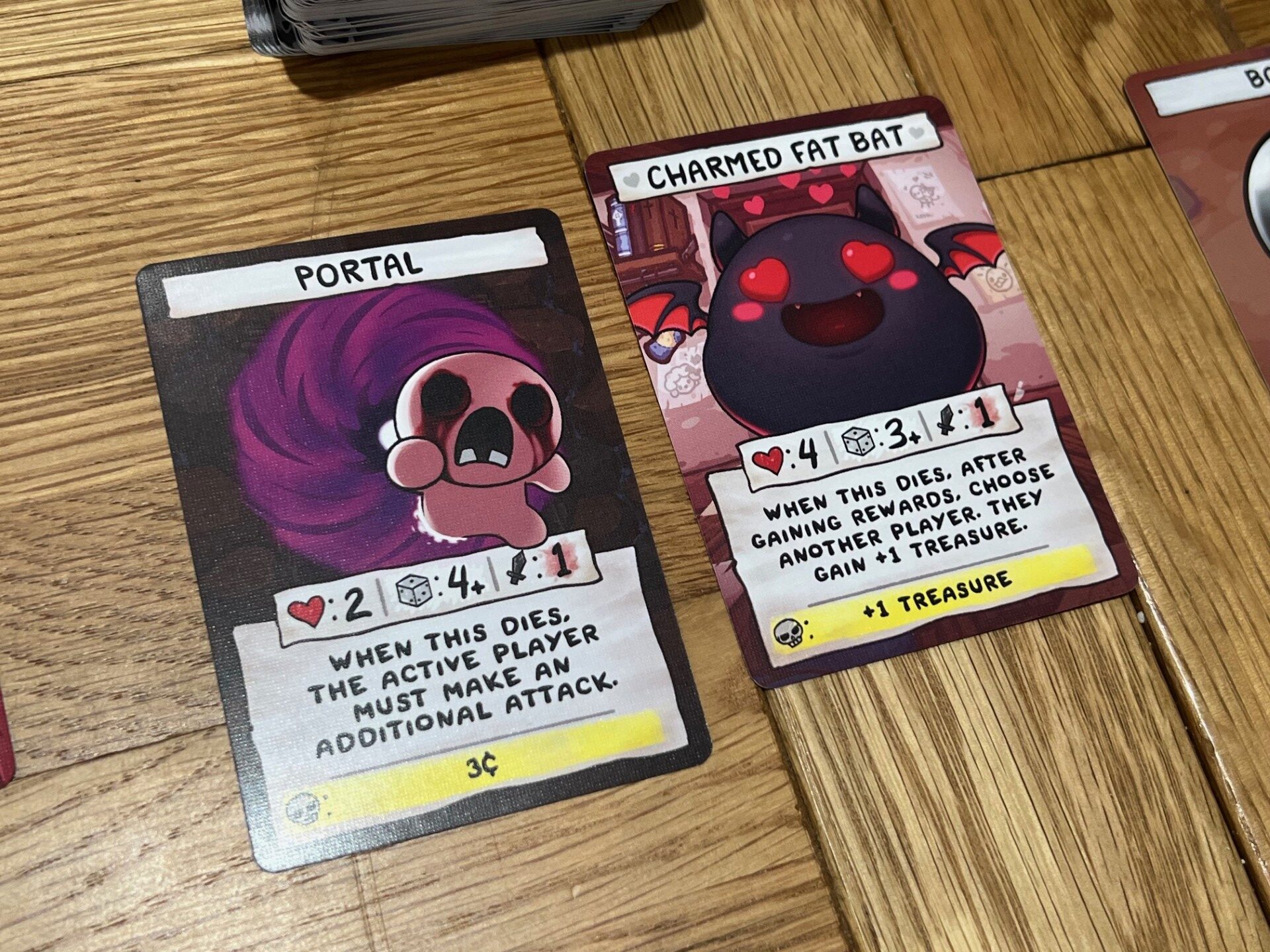The Binding of Isaac: Four Souls and its Requiem expansion will take you to dark places!
Originally released in 2018, The Binding of Isaac: Four Souls has recently been revitalised via a significant expansion known as The Binding of Isaac: Four Souls: Requiem, and a whole host of smaller booster packs that add between 10 and 15 specific cards. We didn’t play much of The Binding of Isaac: Four Souls back in the day, but we’ve recently thrown the Requiem content in, shuffled it all together and dragged some mates over for a few games!
Keeping in the spirit of The Binding of Isaac video game, The Binding of Isaac: Four Souls is a somewhat jagged, often unbalanced and frequently mean multiplayer card game that plays relatively quickly so as to avoid frustration. Also aligned to what The Binding of Isaac is all about is the randomness and variability — with hundreds of cards in the base game alone, and 250 more in the Requiem expansion.

The main premise of The Binding of Isaac: Four Souls is that in each game, a player must defeat four bosses — to collect their souls. Some smaller enemies don’t have souls, and feasibly there are ways to get to four souls faster (especially with Requiem in play) but let’s not worry too much about that. You’re going to collect items, you’re going to expand your skills and offensive capabilities, and then you’re going to fight enemies — simple.
The original release of The Binding of Isaac: Four Souls was entirely competitive in nature, but one of the variety aspects that Requiem adds is cooperative and solo play, and to be honest the rules overhead when playing in either of these modes is minimal — so it’s very simple to just ask the people you intend to play with whether they prefer friendly or competitive play, and then you can dive straight in.

Requiem also includes a deck of cards that rebalance some of the cards from The Binding of Isaac: Four Souls, for example Isaac’s starting item (the D6) which is now much less powerful than it was. These are optional, arguably, but given that most of them are designed to make the game feel more balanced and perhaps to help people who are falling behind, I have swapped them all in and now store any original copies elsewhere to avoid them dropping back into games by mistake.
Getting briefly into what The Binding of Isaac: Four Souls plays like, it might be worth mentioning that some of the gameplay feels like a TCG such as Magic: The Gathering, where players often declare a card action and then wait for their opponents to react to that action. On many turns, in a three or four player game, there can easily be at least one interruption per player per action, and whilst most of these are quick to resolve, it gives The Binding of Isaac: Four Souls a slightly chaotic feel.

That said, it also feels a lot like the video game — and the artwork certainly helps this. At the beginning of each game, every player will choose one of the many characters available from either the base game, the Requiem expansion or one of the other booster packs available. Characters usually come with abilities of their own and at least one starting item, as well as a number of coins.
From that point forwards, turns will be taken to gather loot and items, with some then being played to add to a persistent tableau. In this way, each player (and their chosen character) will have access to more and more abilities each turn, and the creep of these powers is iterative in a way that means it’s entirely possible to keep track of both what you can do, and what your opponents can do.

Not everyone is going to love the fact that their turn can be interrupted and that maybe – as an example — an opponent to their left can hurt or tax them when a certain action is taken. However, this is very much in the spirit of the roguelike video game genre and the dark everyone-for-themselves mythos that The Binding of Isaac mythos is known for. This is perhaps why the cooperative mode was introduced, and to be honest in a lot of cases it simply means that negative effects are ignored.
Additionally, whilst players can (and will) die in The Binding of Isaac: Four Souls, it isn’t quite as harsh as you might expect, and certainly not as harsh as the videogame. Rather than either being eliminated or losing everything, a deceased player simply loses one item and one coin, and then flips all their remaining cards sideways — meaning that they can’t use them until their turn comes around again.

There’s no doubt that The Binding of Isaac: Four Souls works better at perhaps three to four players than it does at two. When playing with either just my partner or one of our kids, we much prefer the cooperative version even though we all enjoy other head to head games (including the previously mentioned Magic: The Gathering). This is probably because The Binding of Isaac: Four Souls thrives with chaos, and that doesn’t really ramp up until you’re at a higher player count.
With some great components that evoke the videogame, and mechanics that are on the mean side but modified through the recent expansion, The Binding of Isaac: Four Souls is a light, fun game that really suits higher player counts and thrives on its variability — which in turn leads to a level of replay value which many will really appreciate. Simple but arbitrary combat can sometimes feel “tacked on” but actually, the clever card play and player interaction is really what The Binding of Isaac: Four Souls is all about.
The Binding of Isaac: Four Souls can be found on Amazon.
Love both video games and board games? Here’s our list of some fantastic crossover games.
Comments are closed.